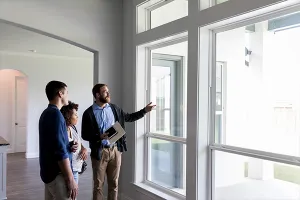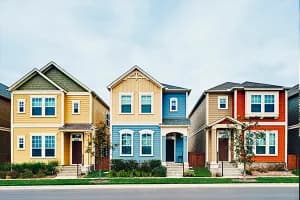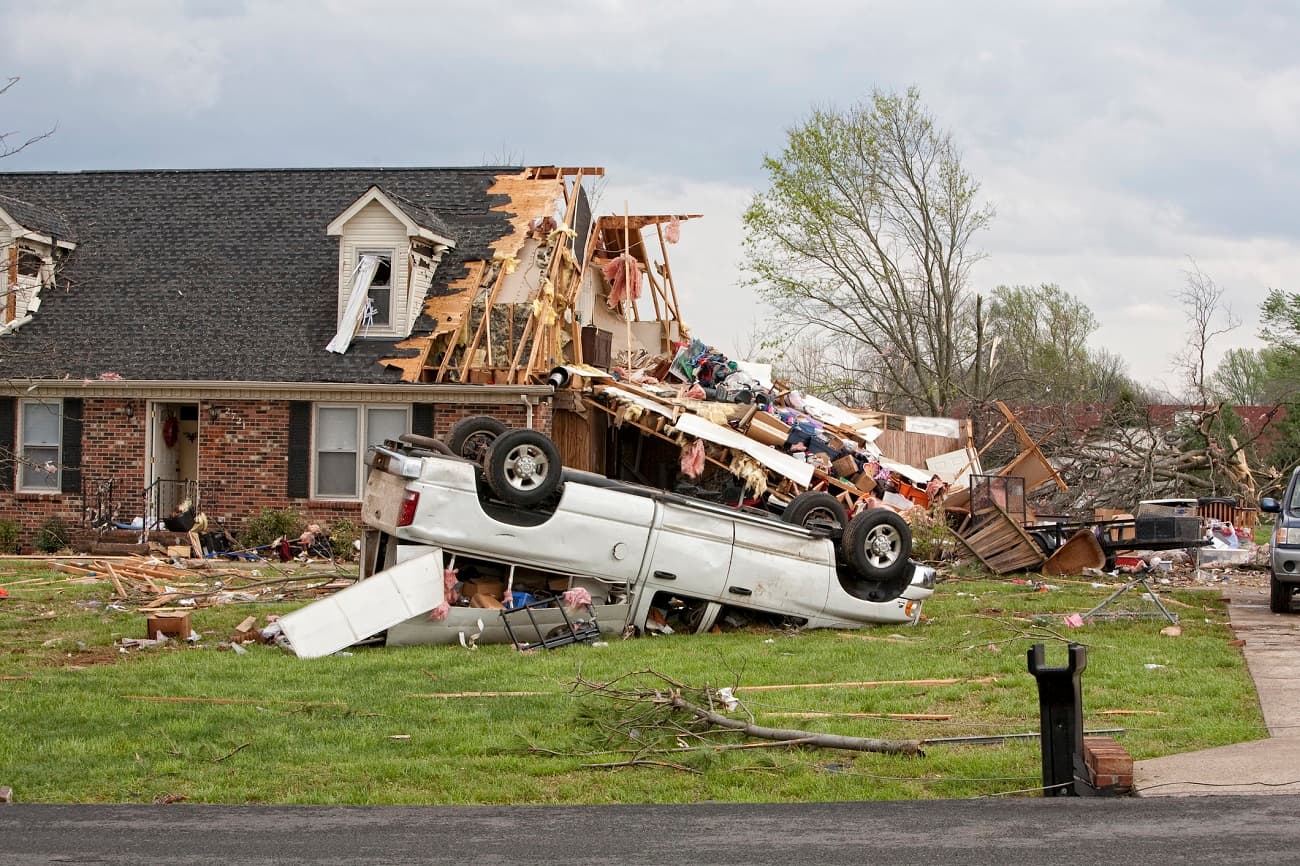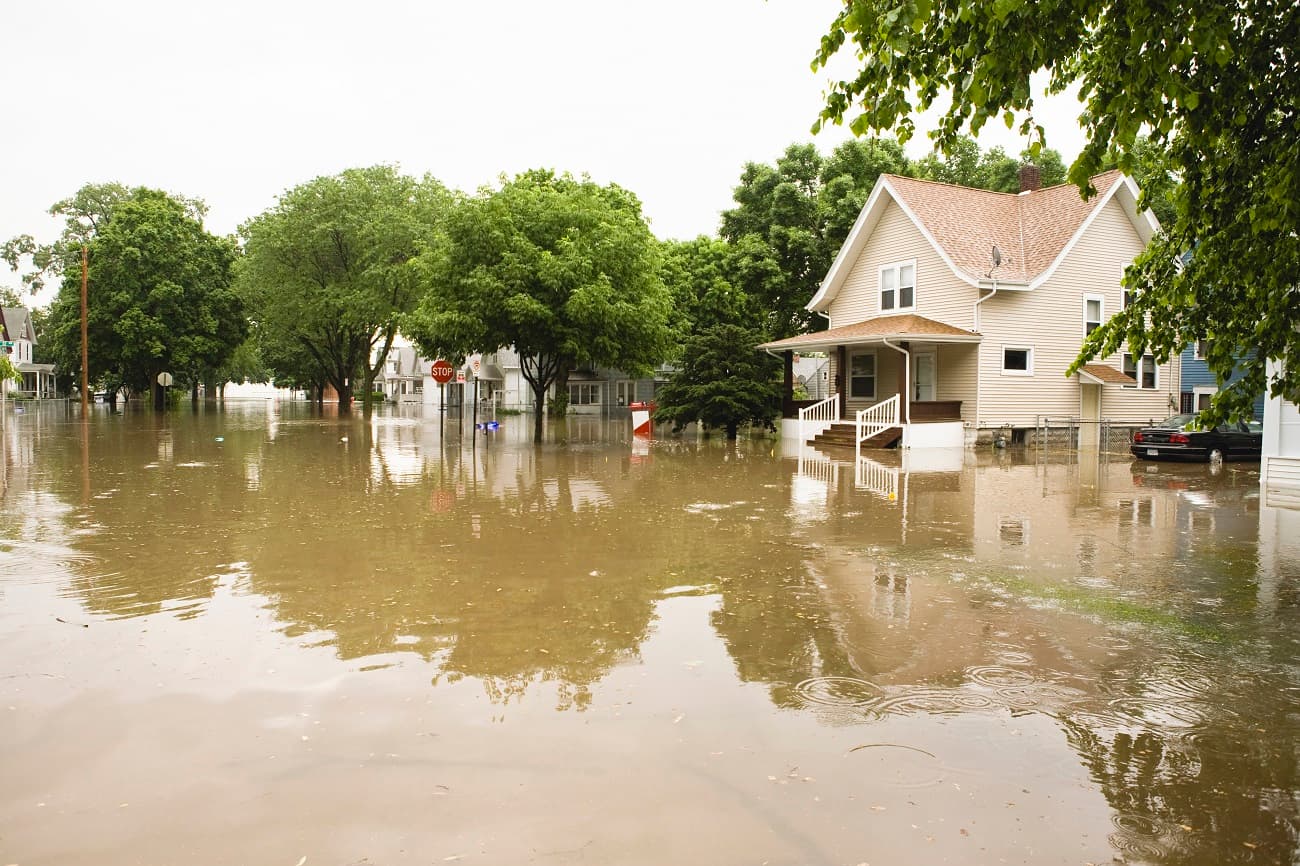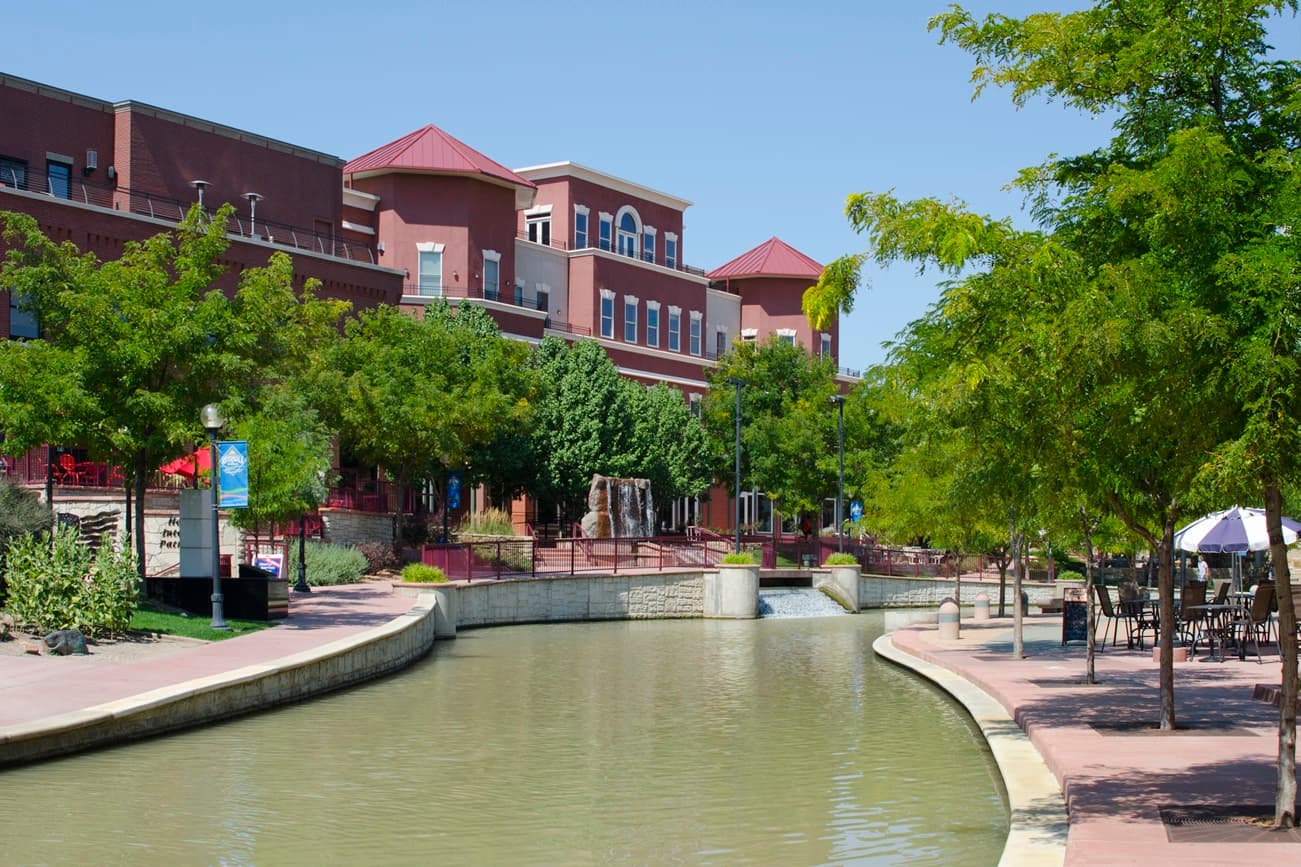Experts from the fields of architecture, engineering, planning and insurance have figured out how to harden houses against the threat of myriad natural disasters including fire, wind and flood. The issue is many communities are built out and retrofitting is very costly.

Many people are shocked to find out that there is little federal disaster aid to pay for temporary housing when a disaster makes the dwelling they own or rent uninhabitable for months, if not years.
In a political reality when programs are being cut or reduced and not that many people support paying more taxes to fund resiliency, many are searching for answers.
While communities wrestle with how to rebuild better and how to avoid being the next victim of wildfires or wind and water, best practices are worth examining.
Illya Azaroff, FAIA, founding principal of +LAB Architect PLLC with offices in New York and Los Angeles, is a leader in climate adaptation, mitigation, resilient planning and regenerative design.
“The question we often hear is how can we afford to pay for resiliency? When the reality is we cannot afford not to,” he said.
Azaroff, the president-elect of the American Institute of Architects, worked on rebuilding after Hurricane Sandy. He said a lot of working-class people, with modest savings, never expected to be ravaged by the type of storm normally associated with the tropics, but Sandy devastated a lot of small 1950s and 1960s houses in the Far Rockaway neighborhood in Queens, N.Y.

For the same cost as conventional building, you could rebuild a complete resilient home.
“Existing federal guidelines for replacement housing following disasters does not focus on building back better to address the future shocks and stressors of climate changes,” he said. “But we wanted to prove that for the same cost as conventional building, you could rebuild a completely resilient home. In one place, we saved 83 percent of the insurance costs — because the home was built to withstand disasters. That is a lot for an area with retirees and modest incomes.”
Azaroff, who has worked on post-disaster building efforts around the world, said rebuilding is a combination of innovation plus vernacular architecture that responds to regional wind, water and heat extremes. He said working with nature, not against it, also is a big part of creating resilient homes.
Azaroff’s +LAB studio combined resilience, environmental regeneration and Universal Design in its Cranberry House in Massachusetts with features that include: a small building footprint that preserves and restores a wetland and wildlife area on the four-acre site; a fully accessible house that allows aging-in-place; a tornado safe room built to FEMA standards; rebuilding with harvested old timber on the foundation of an 18th-century building; solar power that allows the residence to be powered off the grid; and a system for harvesting rainwater.
We Know How to Harden Homes Against Disasters
Ian Giammanco, Ph.D., the managing director of Standards & Data Analytics and lead research meteorologist at the Insurance Institute for Business & Home Safety (IBHS) said, that while some areas grab headlines for being more prone to devastating wildfires and hurricanes, every region in the United States is vulnerable to some kind of natural disaster—be it caused by fire, wind, flood, hail or earthquake.

He said in many places, building codes have not kept up with the hazards homeowners face. While the cost in dollars can wipe out savings and put people in debt who had paid off a home that now must be razed and rebuilt—the human toll is higher.
“People don’t realize… the devastation,” Giamanco said, speaking in terms of loss of all household appliances, articles and one-of-a-kind mementos—along with living in cramped, substandard replacement housing because rebuilding can take many months. “For those who don’t experience it, it’s out of sight, out of mind. But believe me, when you talk to people going through the trauma of losing your home, your neighbors, your community—you don’t want to go through what they have.”
Research has found what materials and actions guard against a disaster... Resilience is going to become a much more heightened asset for homeowners.
Giamanco said the good news is IBHS and other research has found what materials and actions guard against a disaster. He said the other good news is that some mitigation requires simple DIY—not a monumental project such as shoring up and elevating a home several feet above a flood plain.
“For wildfire mitigation, make sure the first five feet around the house does not have any combustible material. For the house, a metal or tile roof or asphalt shingles works, along with the first six inches from the ground up made on noncombustible material,” he said. “Metal mesh screens over attic and crawl space vents keep embers from getting inside your home.”
From a government standpoint, Giacamo said stronger building codes are needed. “During Hurricane Ian, we estimated the Florida building code saved $1 billion to $3 billion in structural damage avoidance alone.”
“For buying or selling a home in Florida, one of the most important things is looking at how resistant the house is to hurricanes and what insurance is required to cover it,” he said. “Resilience is going to become a much more heightened asset for homeowners.”
Giacamo praised government grant programs, such as the Strengthen Alabama Homes program that awards up to $10,000 to owners of existing homes to upgrade them with stronger roofs, windows, doors and other features to prevent wind and rain damage. He said the program has resulted in huge insurance savings for those who have retrofitted their home—stabilizing the insurance market for tens of thousands of coastal dwellings.
Risk Mitigation May Be the Only Way To Keep Insurance Affordable
Austin Perez, a senior policy advisor for the National Association of REALTORS®, emphasizes the importance of homeowners actively mitigating risks to make their homes insurable and to reduce insurance rates. He notes that federal disaster aid programs offer limited assistance for basic needs immediately after a natural disaster. “FEMA aid is not intended to make homeowners whole and is not a substitute for insurance,” Perez explains, citing examples where FEMA provided an average of $4,000 in disaster assistance, leaving households to rely on Small Business Administration loans with interest.
Perez points out that the increasing frequency of natural disasters is driving up insurance costs and causing some insurers to exit the market in some high-risk areas. “Many states have kept insurance costs low for decades, leading people to move to more affordable but riskier areas,” he says. “This disconnect from true risk pricing has resulted in unexpected insurance cost increases that do not cover the full cost of rebuilding.”
Real estate markets function best when buyers have accurate information about the total cost of homeownership, including insurance.
He explains that real estate markets function best when buyers have accurate information about the total cost of homeownership, including insurance. “When buyers qualify for mortgages based on subsidized insurance rates, they face significant increases in insurance costs after a disaster,” Perez notes. This hidden cost leads to buyer’s remorse and market instability.
Perez advocates for making homes safer rather than focusing on affordable insurance. He suggests that federal and state mitigation grant programs and tax incentives can help reduce the risk and cost of insuring homes. “Grants and tax incentives for elevating homes above flood levels, installing hurricane-resistant roofs, and community-wide wildfire building standards can help reduce insurance costs.”
Single-Family Rental and Build-To-Rent Industries’ Investment in Resiliency
Augie Williams-Eynon, a manager with Urban Land Institute’s (ULI) Randall Lewis Center for Sustainability in Real Estate, was the lead author of ULI’s “Sustainability in Single-Family Rental and Build-to-Rent” study.
“The challenge for large portfolio owners — acquiring or building then managing tens of thousands of homes — is that each house faces a different risk profile. They are not just looking at operating efficiencies through low-energy appliances, LED lights and better windows/insulation (for lower heating/cooling costs) — they are making sure these homes are built and [located] in places with reduction of risk to disaster,” Williams-Eynon said.
William-Eynon hopes the lessons learned by large investors in single-family rentals can be passed on to individual homeowners — though individuals cannot match the economy of scale of building hundreds to thousands of units in the same phase.
“They are building a structure that’s well connected and fastened from room to floors to foundation. They are designing roof and exterior walls to survive impact and not be ripped off in high winds,” he said. They are building for floodproofing with elevated mechanicals. Single-family, build-to-rent developments have underground utility lines, which keep a property up and running after a severe storm.
The ULI report notes that the single-family rental and build-to-rent sectors are among the fastest growing segments of residential real estate. They accelerated during the COVID-19 pandemic and show continuing signs of growth and demand.
Resilient buildings are more valuable buildings.
“This will be a big driver of real estate. Resilient buildings are more valuable buildings,” Williams-Eynon said. “Resilient homes make securing financing easier; they attract a high-quality tenant and when a disaster strikes, they reduce losses.”
Babcock Ranch: A Marquee Example of Sustainability
Florida’s Gulf Coast has been battered by multiple hurricanes. Babcock Ranch, in Charlotte and Lee Counties near Fort Myers, was designed to be a sustainable, environmentally friendly planned community hardened against crushing windstorms and floods.
Hurricane Ian, a Category 4 storm with wind gusts up to 150 mph, made a direct hit on Babcock’s 5,000 residents in September 2022. It was the supreme test of a 27-square-mile community with a huge nature preserve, nature-based stormwater controls, buried electrical lines and solar electricity.
By the time Ian left Southwest Florida, 149 lives were lost and $112 billion in property damage was done. Babcock Ranch, surrounded by disaster, was virtually unscathed.
“We carefully selected a team of homebuilders with a shared commitment to creating an innovative, responsibly developed hometown that exists in harmony with the environment. Focusing on both resilience and sustainability, all homes in Babcock Ranch are built to minimum of Bronze level Certification by the Florida Green Building Coalition’s Green Home standards, meaning homes are not only more energy efficient, they are also designed to withstand 160-mph wind loads,” said Syd Kitson, former NFL player and leader of Florida real estate development firm Kitson & Partners.

Many things contributed to Babcock Ranch’s resilience. When Kitson negotiated for the massive site, it planned to sell 74,000 of its 91,000 acres to the state of Florida. The sale created the largest conservation buy in state history. Stone quarries were tailored to blend with natural water features to create extensive water retaining ponds to handle storm surge. It is located 30 miles inland from the Gulf of Mexico and natural fill built it up to 30 feet above sea level to reduce the risk of flooding.
As the first solar-powered community in the United States, it uses more than 650,000 solar panels to power homes through underground power lines that are not susceptible to windstorm damage. On-site water and wastewater utility facilities are elevated above the 100-year flood plain and underground fiber optic lines provide data connectivity during extreme weather events.

Heather McGowan, manager of Association Archives for the National Association of REALTORS® (NAR), wrote about Babcock’s nature-based resilience in the report “A Case Study on Building Communities with Sustainability and Resiliency at the Forefront.”
Babcock Ranch was successful because it was designed and developed to work with the environment.
“Babcock Ranch was successful because they designed and developed to work with the environment. They worked with canals, lakes and marshlands to absorb water when it could flood,” she said. “It’s cool that they never brought in artificial fill. That was environmentally sensitive and sustainable.”
McGowan said being very intentional about master planning for sustainability and resiliency paid off for Babcock, while surrounding communities built to conventional subdivision standards suffered huge losses. Babcock also proves that resilient design can be attainable for many people. The median listing price for a resilient Babcock Ranch home is $415,000, while a conventional built home in nearby Fort Myers is listing for a median of $380,000.
“There was little evidence that Babcock had just spent eight hours under a hurricane. Some newer trees had fallen over, some signs were damaged, and a few roof tiles had been dislodged, but the town was not flooded, native vegetation remained intact, and the electricity and water never went out,” McGown’s NAR report stated. She encouraged communities to incorporate green building standards and to search for ways of funding part of that cost.
Kitson stressed that land-use patterns that support walkability are also an important part of community sustainability. He noted that Babcock residents can easily walk or bike to parks and shopping and dining destinations. More than 50 percent of the development, which is still being built out, is dedicated to greenways, parks and lakes.
“While Babcock Ranch is designed uniquely to its location and ecosystem, we’re seeing consumers, counties and builders alike begin to take the progressive steps to adopting a new standard for climate resilience to meet their needs across the globe,” Kitson said of Babcock’s exportable resilience model. “From building codes to technology and other innovative adaptations. Babcock Ranch might have been an early adopter, but the tides are changing, and builders/developers are reacting differently today than they did 10 years ago.
“Babcock Ranch was intentionally developed to include stewardship, sustainability, preservation and restoration as key design features. More than 90 percent of the town is built on already impacted pasture, farm and rock-mined land. Water conservation is woven into its green infrastructure, from landscaping with native, low-impact plants to construction of a weir [small dam] system to rehydrate surrounding wetlands.
“Sustainability has been a passion for me since college and developing Babcock Ranch has become a lifelong project that illustrates to the world that building with, not against, nature is possible, scalable, and financially accessible to all. I wanted to create a new city that works in harmony with nature. Babcock Ranch serves as an inspiration for communities around the world seeking to leave a positive impact on the planet.”
Template for Government Support: Mecklenburg Flood Buyout Program
In North Carolina, which experienced massive flood damage from Hurricane Helene, the Charlotte-Mecklenburg area has a Floodplain Buyout Program. The buyouts are voluntary, no owners of homes or businesses are forced to sell.

Mecklenburg County states that “buying and removing buildings in the floodplain is one of the most cost-effective ways to reduce long-term flood damage and create many other community benefits.”
“Local floodplains are meant to flood during heavy rains. It’s mother nature’s way of slowing down water to reduce damage caused by raging rivers. Floodplains also filter stormwater pollutants by temporarily storing floodwater. However, many communities including Charlotte-Mecklenburg, have developed within the floodplain, putting homes, businesses and other property in areas meant to flood,” explains the program’s website.
The buyout program started in 1999 and first sought FEMA grants. It also is paid for by the county’s stormwater utility funds billed to residential and commercial properties. “Once we purchase the properties, we maintain them — keeping the grass mowed and planting some trees. Some become park greenways or community gardens, a lot are one-offs,” said Jonathan Beller, who runs the program.
The county also funds elevating houses out of the flood plain. Homeowners must get three bids for soil testing, engineering, mechanical/electrical/plumbing and the actual lifting of the home. The county reimburses 75 percent of the cost.
There are variables, such as the cost of masonry work, but elevating a roughly 2,000-square-foot house cost the county about $150,000 in reimbursement. For a total buyout, the total expense would have been $500,000. Since the program was launched, Mecklenburg has purchased about 500 properties in the flood plain, removed them and mitigated more than $50 million in future hazard losses. Additionally, the buyout program has created 185 acres of undeveloped public space, enhancing community resilience and reducing flood risk.
Mecklenburg is working to prevent people from suffering great damage from a disaster.
“Never let a good crisis go to waste is attributed to Winston Churchill,” Beller said. “We never want a disaster to go to waste, so we are working to prevent people from suffering great damage when a disaster hits. After Helene, the program made buyout offers on 27 damaged homes and 15 in the flooded area are interested in being elevated.”
